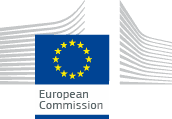The Ecodesign Directive
Sustainable industrial policy aims in particular at developing a policy to foster environmental and energy efficient products in the internal market. The Ecodesign Directive 2009/125/EC is the cornerstone of this approach. It establishes a framework for the setting of ecodesign requirements for energy-related products with the aim of ensuring the free movement of those products within the internal market. Directive 2009/125/EC repealed the original Directive 2005/32/EC for the setting of ecodesign requirements for energy-using products. It prevents disparate national legislations on the environmental performance of these products from becoming obstacles to the intra-EU trade and contributes to sustainable development by increasing energy efficiency and the level of protection of the environment, taking into account the whole life cycle cost.
The Ecodesign directive itself does not set binding requirements on products: it provides a framework (rules and criteria) for setting such requirements through implementing measures. It is also possible to introduce information requirements for components and sub-assemblies. The Commission prepares implementing measures only for products which have significant sales and trade in the EU, a significant environmental impact and potential for improvement. Product groups are identified following the procedure described in Article 16.
The Preparatory Study
In its Working Document on Lighting Products1 of 4 April 2014, discussed and welcomed at the Ecodesign Consultation Forum of 5 May 2014, the European Commission reports on the outcome of the 2013-2014 Omnibus Review study2 and the way forward.
The Commission concludes that the main outcome of this review shows that there are considerable uncertainties as to when and how a revision of Regulation 244/2009 3should be implemented with a view to minimising possible negative impacts in terms of functionality, affordability and industry’s competitiveness.
For Regulation 245/2009 4, the review study recommends further developing the regulatory requirements, for example through replacement of out-dated ballasts, requiring a higher minimum lamp efficacy, and adding LED-lighting to the scope. Furthermore, the review study proposes merging the three lighting-related ecodesign regulations into one coherent measure. The misuse of special purpose lamps regulated under Regulation 244/2009 is already addressed as part of the stage 6 review, and the review supports the view to look in more detail at this issue.
To further address the above-mentioned issues, the Commission services requires a comprehensive follow-up study for lighting. This preparatory study would build upon the previous studies to establish the basis for a regulatory advancement of Regulations 244/2009, 245/2009, 874/2012 5 and 1194/2012 6 ('Lot 8/9/19'), including all amendments and corrigenda thereof.
This study would also allow the Commission to fulfil the legal review requirements of Regulations 874/2012 and 1194/2012, and provide a detailed market assessment of mains-voltage filament lamps as required by Regulation 1194/2012, Annex III 1.1. This study is foreseen to come to an end at latest in the second semester of 2015. Based on the results, the Commission services will come forward with further proposals for a revision of all lighting implementing measures. Throughout this process stakeholder consultation is ensured.
The preparatory study will provide the necessary information to prepare for the next phases in the policy process (carried out by the Commission) and in particular the impact assessment, the consultation forum, and the possible draft implementing measures. The approach used throughout this study will be the Methodology for Ecodesign of Energy-related products (MEErP), which is further explained in the section Methodology. 7
The Energy labelling Directive
The preparatory study may also be used as supporting analysis for the preparation of energy labels in accordance with Directive 2010/30/EC8, recital (7) and Article 10(3).
For more information on the Ecodesign Directive 2009/125/EC and Energy labelling Directive 2010/30/EC and related activities, please visit the Links page.
[1] European Commission, Working Document on Lighting Products – Results from studies and suggested way forward, Brussels, 4 April 2014.
2 VHK/VITO/Viegan Maagøe/Wuppertal Institute, Omnibus Review Study on cold appliances, washing machines, dishwashers, washer-driers, lighting, set-top boxes and pumps, prepared under contract for the European Commission, April 2014.
3 Commission Regulation (EC) No 244/2009 of 18 March 2009 implementing Directive 2005/32/EC of the European Parliament and of the Council with regard to ecodesign requirements for non-directional household lamps
4 Commission Regulation (EC) No 245/2009 of 18 March 2009 implementing Directive 2005/32/EC of the European Parliament and of the Council with regard to ecodesign requirements for fluorescent lamps without integrated ballast, for high intensity discharge lamps, and for ballasts and luminaires able to operate such lamps, and repealing Directive 2000/55/EC of the European Parliament and of the Council
5 Commission Delegated Regulation (EU) No 874/2012 of 12 July 2012 supplementing Directive 2010/30/EU of the European Parliament and of the Council with regard to energy labelling of electrical lamps and luminaires
6 Commission Regulation (EU) No 1194/2012 of 12 December 2012 implementing Directive 2009/125/EC of the European Parliament and of the Council with regard to ecodesign requirements for directional lamps, light emitting diode lamps and related equipment
7 Methodology for the ecodesign of energy-related products (MEErP) http://ec.europa.eu/enterprise/policies/sustainable-business/ecodesign/m...
1 DIRECTIVE 2010/30/EU OF THE EUROPEAN PARLIAMENT AND OF THE COUNCIL of 19 May 2010 on the indication by labelling and standard product information of the consumption of energy and other resources by energy-related products (recast).

